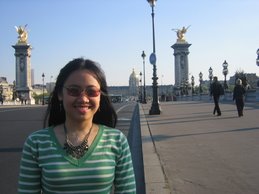By increasing the number of base station (BS) antennas we can resolve the uplink limitation of WCDMA. However, this approach does not allow a single step solution because many factors intervene before completing the process. These factors include: propagation environment, BS configuration, environmental issues as a result of power levels, and network integration in terms of the radio network controller (RNC). However, here we consider first the BS configuration by looking at the antenna design. We need low correlation between the antennas achievable by adequate separation between the antennas. The beam forming technique may exploit a uniform linear array, where the inter-antenna spacing falls near 1/2 of a carrier wavelength. Then sectors using narrow beams will have an increased antenna gain when compared to typical sector antenna.
While pico and micro environments have higher angular diversity, the macro environment has lower angular diversity, but higher multi-path diversity. Thus, the macro environment can benefit from beam forming techniques, because the latter applies more to lower angular diversity conditions.
Multi users detection technique
Multi-user Detection (MUD) techniques may apply to both the uplink (UL) and downlink (DL). However, initially due to processing power constraints in the MS, MUD may be exploited first in the BS. Thus, here we look at performance enhancement primarily in the UL while implementing MUD in the BS. The two UTRAN registration area (UTRA) modes, i.e. Frequency division duplex (FDD) and time division duplex (TDD) can benefit from MUD techniques. In fact, the joint detection algorithm is already an inherent part of the TDD mode. Capacity within interference-limited WCDMA can improve through the use of efficient receivers. This implies that the structured multiple access interference can be dealt with at the receiver through multi-user detectors.
Software radio applications
This solution appears more realistic today through Software Radio (SR), the application of flexible and programmable transceivers. Thus, SR sets itself as a key technology to drive the realization of global standards in 3G systems. The evolution of GSM to UMTS alone will benefit multi-band multi-mode (GSM 900, 1800, 1900, GPRS, UMTS (FDD and TDD) terminals. On the other hand, SR not only applies to terminals or Mobile Stations (MS) but also the to the Base Stations (BS).
While pico and micro environments have higher angular diversity, the macro environment has lower angular diversity, but higher multi-path diversity. Thus, the macro environment can benefit from beam forming techniques, because the latter applies more to lower angular diversity conditions.
Multi users detection technique
Multi-user Detection (MUD) techniques may apply to both the uplink (UL) and downlink (DL). However, initially due to processing power constraints in the MS, MUD may be exploited first in the BS. Thus, here we look at performance enhancement primarily in the UL while implementing MUD in the BS. The two UTRAN registration area (UTRA) modes, i.e. Frequency division duplex (FDD) and time division duplex (TDD) can benefit from MUD techniques. In fact, the joint detection algorithm is already an inherent part of the TDD mode. Capacity within interference-limited WCDMA can improve through the use of efficient receivers. This implies that the structured multiple access interference can be dealt with at the receiver through multi-user detectors.
Software radio applications
This solution appears more realistic today through Software Radio (SR), the application of flexible and programmable transceivers. Thus, SR sets itself as a key technology to drive the realization of global standards in 3G systems. The evolution of GSM to UMTS alone will benefit multi-band multi-mode (GSM 900, 1800, 1900, GPRS, UMTS (FDD and TDD) terminals. On the other hand, SR not only applies to terminals or Mobile Stations (MS) but also the to the Base Stations (BS).

No comments:
Post a Comment